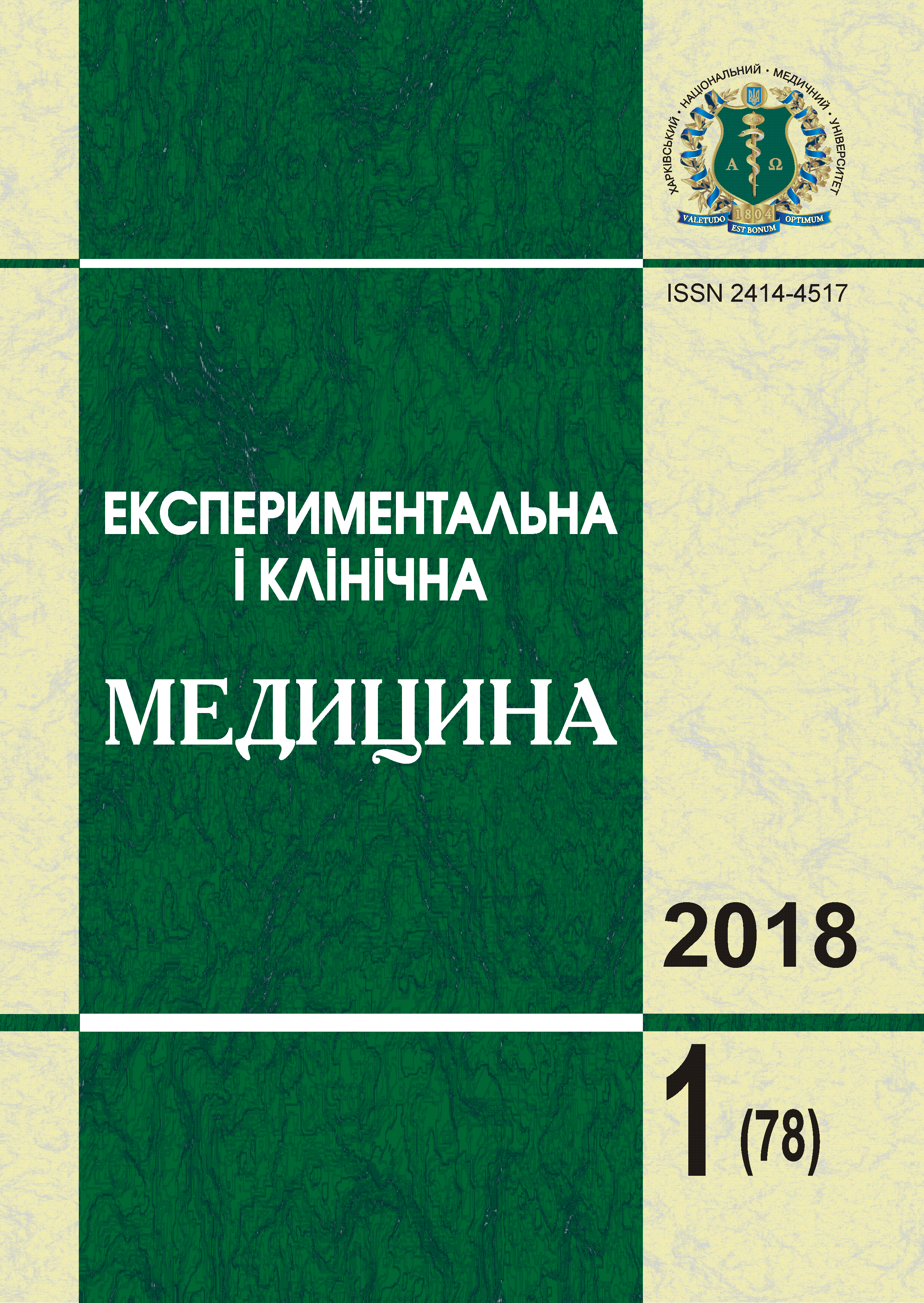Abstract
Staphylococcus component was more representative ones in the skin microbiocenosis and could take part in the development and make worse these allergodermatosises duration. S. aureus prevailed quantitatively and qualitatively in patients with atopic dermatitis, it was evidence of the skin colonization resistance breach which showed replacing of the saprophytes by conditionally pathogenic species in ecological niche. Antibioticoresistance screening of laboratory culture isolation showed circulation of the polyresistance culture and culture with extensive resistance. Common quantity of the resistant cultures (MRSA and MR–CNS -strains) was 33,3 %.References
Katunina O.R., Rezaikina, A.V. (2009). Sovremennyie predstavleniia ob uchastii kozhi v immunyh protsessah [Current presentation about skin participation in immunological processes]. Vestnik dermatolohii i venerolohii – Herald of dermatology and venerology. 2: 39–46. [in Russian].
Kutasevich Ya.F. (2002). Sovremennyi vzgliad na problemu psoriaza [Current opinion on psoriasis problem]. Dermatolohiia i venerolohiia Dermatology and venerology. 2: 3–10. [in Russian].
Lutina Ye.I., Manerov, F.K. (2004). K voprosu ob epidemiolohii allerhicheskih zabolevanii [In question about epidemiology of allergic diseases]. Allerholohiia – Allergology. 4: 55–57. [In Russian].
Mokronosova M.A. (2003). Vliianie Staphylococcus aureus na techenie atopicheskoho dermatita [Staphylococcus aureus influence from atopic dermatitis duration]. Allerholohiia – Allergology. 1: 46–50. [in Russian].
Tekucheva, L.B., Zaytseva, E.V., Arzumanyan, V.G., Temper, M.R. (2006). Monitoring staphilikokkovoy microflory rozhi u bolnyh atopicheskim dermatitom [Skin staphylococci microflora monitoring from patients with atopic dermatitis]. Vestnik dermatology and venerology, 2, 39-46.
Orkin, V.F., Olehnovich, R.M. (2002). Microbnaya eczema (klinika, patogenez, lechenie) [Microbial eczema (clinic, pathogenesis, traetment)]. Journal of dermavenerology and kosmetology, 2, 24-26.
Ozkaya, E. (2005). Adult–onset atopic dermatitis. J Am Acad Dermatol., 52, 579-582.
Belyaev, G.M. (2012). Sovremenniye aspekty patogeneza allergodermatozov (po dannym literatury i opytu avtora) [Modern aspekts of allergic dermatoses pathogenesis (according to literature and author experience)]. Dermatology and venerology, 2(56), 7–26.
Bolotnaya, L.A. (2014). Terapevticheskaya korrektsiya intoksikatsii u bolnyh s hronicheskimi vospalitelnymi dermatozami [Therapeutic correction of the intoxication in patients with chronic inflammatory dermatoses]. Ukrainian journal of dermatology, venerology, cosmetology, 3(54), 11-15
Dzhoraeva, S.K., Goncharenko, V.V., Schegolyeva, E.V.,Scherbakova, Y.V., Bezruchenko, A.A. (2015). Sklad ta funktsii mikrobiotsenoziv riznyh biotopiv makroorganizmu ta klinichna znachimist ih porushen [Composition and functions microbiocenosis of different macroorganism biotope and clinical significance of their disturbances] Dermatology and venerology, 2 (68),5 – 19.
Boguniewicz, M., Leung, D.Y. (2011). Atopic dermatitis: a disease of altered skin barrier and immune dysregulation. Immunol. Rev., 242(1), 233-246.
Perlamutrov, Yu.N., Olhovskaya, K.B. (2010). Atopicheskiy dermatit: etiopatogeneticheskye aspekty, klinicheskie osobennosti techeniya [Atopic dermatitis: etiopathogenical aspects clinical particularity]. Plastic surgery and cosmetology, 4, 643-648.
Ellis, C., Luger, G. (2003). International consensus confreres on Atopic dermatitis II (ICCAD II). Clinical update and current treatment strategies. Br J Dermatol, 148, 3–10.
Belousova, T.A., Goryachkina, M.A., Katranova, D.G. (2013). Osobennosti microbiotsenoza kozhi u bolnih allergodermatozami: problema vibora napuzhnoy terapii [Skin microbiocenose peculiarities with patients of allergic dermatoses: problems of external therapy choice]. Clinical dermatology and venerology, 11(3), 107-112.
Prikaz № 535 MZ SSSR ot 22.04.1985 “Ob unifikatsii mikrobiologicheskih (bakteriologicheskih) metodov issledovaniya, primenyaemih v kliniko–diagnosticheskih laboratoriyah lechebno–profilakticheskih uchrezhdeniy”
Sergeyev A.YU., G.N.Burtseva ,Sergeyev V.YU.(2014). Stafilokokkovaya kolonizatsiya kozhi, antibiotikorezistentnost' i protivomikrobnaya terapiya pri rasprostranennykh dermatozakh [Staphylococcal colonization of the skin, antibiotic resistance and antimicrobial therapy for advanced dermatoses] Immunopathology, Immunology, Infectology, 4, 32 -45.
Nakaz № 167 MOZ Ukrainy vid 05.04.2007 “Pro zatverdzhennya metodychnyh vkazivok “Vyznachennya chutlyvosti mikroorganizmiv do antymikrobnyh preparativ”
